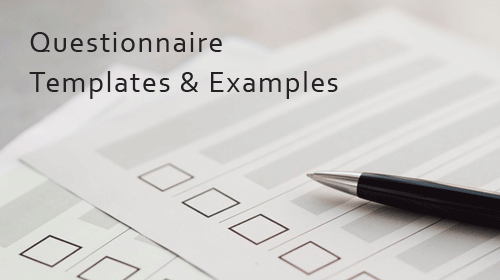You might be wondering what is the main purpose of a questionnaire? This is a question that many people have. A questionnaire is a tool that is used to extract data from respondents. This tool is easy to implement, affordable, efficient, and it will allow you to collect a large amount of data quickly. A questionnaire can be used even when researchers are not present.
However, they are not designed to analyze the information provided by the respondents.
How to Make a Good Questionnaire
Now that you know what a questionnaire is, let’s learn how to make one. The tips you will find below are helpful in developing your very own questionnaire.
- Use Simple Questions: One of the biggest mistakes that people make when designing a questionnaire is making the questions too complicated. When people are faced with complicated questions, they often fail to complete the questionnaire.
- Decided What Information You Require: When developing questions, you should keep in mind what information you need. The entire purpose of a questionnaire is to gather the information that you can use.
- Allow Personal Information to Be Optional: Many people don’t feel comfortable giving out their personal information. This can even be a deal breaker for some. So always make any personal information questions optional.
- Give Them A Reason to Answer: Most people are not going to answer a questionnaire if there is nothing in it for them. To encourage people to take your questionnaire, offer them an incentive such as a gift card or a discount.
- Make It Quick: Your questionnaire should take no longer than 5 minutes to complete. Making your survey quick and easy will provide you with the best results.
- Use One or Two Answer Methods: The easier your questionnaire is to take, the higher your completion rates will be. Use fill-ins or checked boxes to help keep things simple.
Questionnaire Examples & Templates
Here are some examples in Word and PDF format that will give you a better idea of what a questionnaire should look like. You can use these examples to formulate your own questionnaire.
Questionnaire Template 01
This type of questionnaire is designed to measure a customer’s experience.

Questionnaire Template 02

Questionnaire Template 03

Questionnaire Template 04

Questionnaire Template 05
Survey Questionnaire: This questionnaire can be used in a wide range of situations to gather different types of data.

Questionnaire Template 06

Questionnaire Template 07
Employee Benefit Survey Questionnaire: This survey will allow you to gather information from employees that will help you determine what benefits they find most useful.

Questionnaire Template 08
Questionnaire for Library Users: A great survey that will help you gather information about library users and the services they use.

Questionnaire Template 09

Questionnaire Template 10

Questionnaire Template 11
Health Questionnaire: Used by healthcare professionals and medical institutions to gather personal health information from patients.

Questionnaire Template 12

Questionnaire Template 13
Club Questionnaire Survey: Used to gather data from members of different types of clubs.

Questionnaire Template 14

Questionnaire Template 15

Questionnaire Template 16

Questionnaire Template 17

Questionnaire Template 18

Things to Avoid When Writing A Questionnaire
- Avoid Writing Leading Questions. When developing your survey, you will need to avoid leading questions. Leading questions will demand a specific response from the person taking the questionnaire. For example, “Which day is best for a company-wide safety meeting?” This prompts the respondent to pick a date without taking into consideration if a safety meeting is even warranted.
- Double Negatives Are A No No. Avoid questions that contain two negative words. This can confuse respondents who are taking your survey.
- Keep Lists of Choices Short. When you have a long list of choices at the end of a question, it can make it hard for respondents to decipher them all.
- Stay Away from Difficult Concepts. Try to avoid difficult concepts as they may be too complicated for some respondents to understand.
- Avoid Complicated Recall Questions. Over time people’s memories begin to fade, making them less reliable. Keep any recall questions as simple as possible.
Tips for Writing A Questionnaire
- Use Direct Questions: There is no reason to beat around the bush. Ask respondents direct questions and you will get the information you are looking for.
- Ask One Question at A Time: You don’t want to overwhelm your respondents by asking them more than one question at a time.
- Make Sure Each Question Is Useful: Take a look at each question on your survey and make sure they are useful to you.
- Take the Questionnaire: After you develop your questionnaire, take it for a test drive before sending it out.
To prepare for a questionnaire, start out by defining your topics. Next, rank your topics from most important to least important. Finally, develop questions for each of your topics.
When writing a survey questionnaire, you will need to develop your topics of study. The questions you write for your topics need to be simple and to the point. Refrain from using over-complicated words. For the board, ideas make sure you break them down into several questions.
A questionnaire example is a very useful tool for collecting data from respondents for the purpose of survey analysis.
There are many advantages of a questionnaire. Fast results, useful data, and scalability are a few of those advantages. However, there are a few disadvantages that include interpretation issues, survey fatigue, and skipped questions.
Looking For Document Management System ?
Call Pursho @ 0731-6725516
Telegram Group One Must Follow :
For Startups: https://t.me/daily_business_reads




